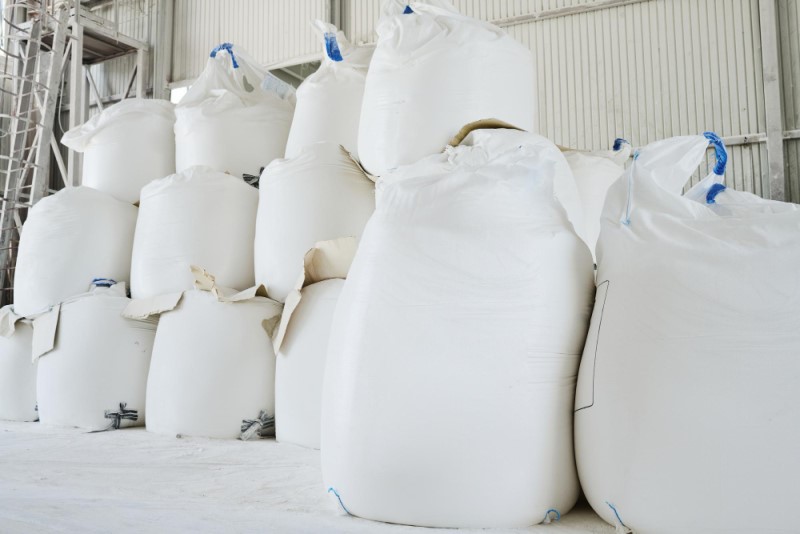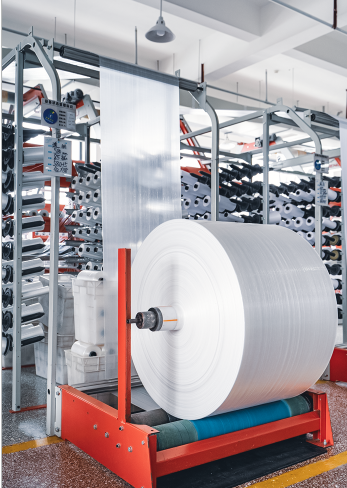
FIBC bags—also known as jumbo bags, bulk bags, super sacks, big bags, or tonne bags—are a workhorse in numerous industries.
These large, flexible containers are designed for the storage and transportation of dry, flowable products. Their affordability, durability, and versatility make them a popular choice compared to traditional options like drums, metal bins, or wooden pallets.
This comprehensive guide dives deep into the world of FIBC bags, exploring their various types, applications, and crucial considerations for choosing the right one for your needs.
FIBC stands for Flexible Intermediate Bulk Container. These large, woven polypropylene bags are designed for storing and transporting dry, flowable materials. They offer an economical and practical solution for various industrial applications.
FIBC bags come in a variety of configurations to suit specific needs. Here’s a breakdown of the most common types:
These basic FIBCs offer no protection against static electricity and are not suitable for flammable or combustible materials. [1]
Type B bags have a static dissipative inner liner that helps prevent static build-up on the bag’s surface. However, they’re still not recommended for flammable materials. [1]
Type C bags feature conductive yarns woven into the fabric. This allows static electricity to safely dissipate through grounding, making them ideal for flammable or explosive materials. [1]
Type D bags are made with specialized materials that prevent static from accumulating on the bag itself. This eliminates the need for grounding and makes them suitable for flammable environments. [2]
Beyond these basic types, FIBC bags can also be further customized with features like:
The number and placement of loops (typically one, two, or four) determine how the bag is lifted and maneuvered.
Skirts around the bottom of the bag offer additional stability when stacked, particularly beneficial for creating secure pallet loads or maximizing storage efficiency in warehouses.
Liners provide an extra layer of protection for moisture-sensitive materials or those requiring containment. Common liner materials include polyethylene film (for moisture protection), woven polypropylene (for added strength), and aluminum foil (for light and moisture barrier).
The applications of FIBC bags are vast and extend across numerous industries because of their versatility and cost-effectiveness. FIBC bags are a valuable asset for various industries such as:
Sand, gravel, cement, and other building materials are frequently transported and stored in FIBC bags. The weight and potential abrasiveness of these materials influence FIBC bag selection. Heavier materials may require bags with higher Safe Working Loads (SWL) and potentially reinforced construction.
Grains, seeds, animal feed, and fertilizers are efficiently stored and handled using FIBC bags. FIBC bags can be chosen in various sizes to accommodate different grain sizes and are compatible with filling equipment for efficient loading. For discharge, spouted FIBC bags can be used in conjunction with specialized unloading systems. [4]
FIBC bags are suitable for various dry chemical powders and granules. Depending on the specific chemical properties, several factors need to be considered for safe storage and transportation.
Pharmaceutical-grade FIBC bags are used for storing and transporting non-hazardous materials. These bags comply with strict regulations to ensure product purity and safety. They may be made from virgin polypropylene materials and undergo additional cleaning processes to minimize contamination risks.
Plastic pellets, resins, and flakes are commonly packaged and shipped in bulk bags. The durability of the FIBC bag needs to be considered to withstand the potentially sharp edges or abrasive nature of some plastics.
Food-grade FIBC bags are used for dry food items like flour, sugar, and rice. These bags must adhere to food safety regulations set by agencies like the FDA or EU. This often involves using virgin polypropylene materials and following specific food-grade compliance certifications.
Selecting the appropriate FIBC bag requires careful consideration. By evaluating these factors, you can select the most suitable FIBC bag for your specific needs:
The type of material being stored or transported will determine the bag’s size, capacity, and static control features. As mentioned previously, consider factors like weight, potential abrasiveness, and moisture sensitivity.
Ensure the bag’s Safe Working Load (SWL) is sufficient to handle the product’s weight. A bag exceeding its SWL is at risk of breakage and potential safety hazards.
Consider the bag’s size and compatibility with available storage and handling equipment. For example, ensure the bag fits on pallets or within designated storage areas.
Choose a bag material and construction that can withstand the intended use and potential hazards.
For food or pharmaceutical applications, ensure the bag complies with relevant food safety regulations.
Contact us today. Our FIBC bag specialists are here to answer your questions and ensure you get the perfect fit for your needs.




